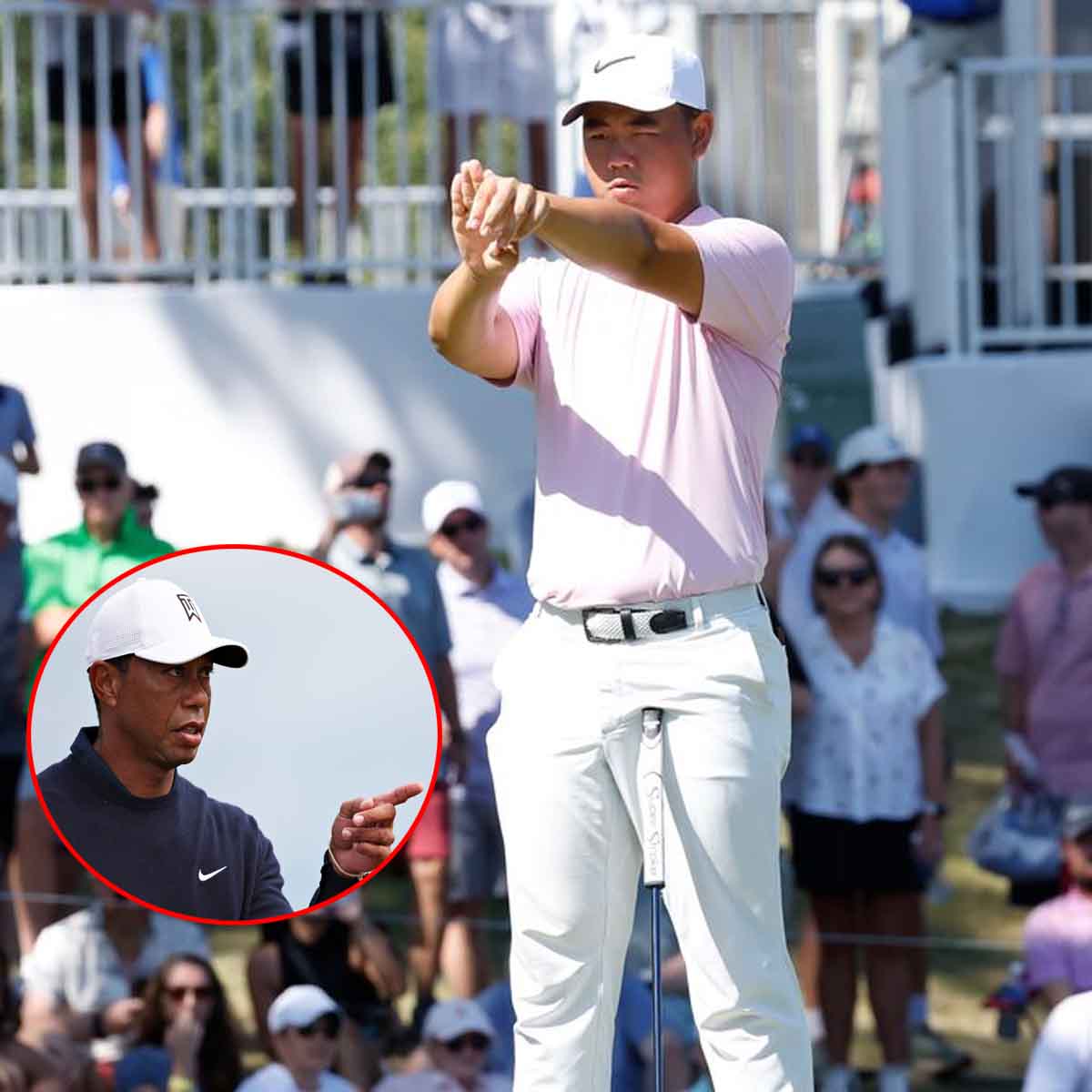 Tennis won’t be the same without the inspirational Williams sisters competing on the tour (Picture: Getty)
Tennis won’t be the same without the inspirational Williams sisters competing on the tour (Picture: Getty)
Measuring the impact of Venus and Serena Williams, two all-conquering sisters from Compton, Los Angeles, is close to impossible. There is a depth and breadth to their stories that is utterly unique and, in many ways, beyond comprehension.
Few could dream of the figures behind their marvellous playing careers. A combined total of 30 Grand Slam singles titles – 23 for Serena, seven for Venus; 14 major doubles titles; nine Olympic medals, eight of which are gold; a combined 330 weeks as world No. 1 and more than $137million earned in on-court prize money.
Statistics alone don’t do this story justice and, frankly, miss the point. This is more than just tennis. The societal impact of these ground-breaking athletes is immeasurable: they changed the face of a predominantly white sport, inspired generations of aspiring talent, and forced the tennis establishment to take steps towards a more equal, just sport. All whilst ruthlessly dominating.
Success forged on their terms Richard Williams mapped out an unconventional path to the top for his daughters (Picture: Getty)
Richard Williams mapped out an unconventional path to the top for his daughters (Picture: Getty)
It was clear long ago that the Williams sisters were different. They would do things their own way.
Their father, Richard Williams – the focus of Oscar-winning Hollywood film “King Richard”, had mapped out a route for his daughters to become the best in the world. That route didn’t involve playing junior tournaments, as was – and largely still is – the status quo.
‘They ripped up all of the textbooks of how you were supposed to become a pro tennis player,’ Annabel Croft, former British No. 1, tells Metro.co.uk. ‘Normally if someone came up to me and said, Could my daughter start playing professional tennis? She’s never played any junior tournaments and she picked up the racquet late. You’d go, Well no, there’s no way. Absolutely not.’
‘There was this road map, you play juniors, you become the best in the world in juniors and then go on the pro circuit,’ says Micky Lawler, president of the Women’s Tennis Association (WTA). ‘Their trajectory was very different from the traditional.’
Lawler, then an agent working for Octagon, had watched them train from afar at Richard Macey’s Tennis Academy in their teenage years, but first properly encountered Serena as a 16 or 17-year-old in Paris.
‘We were waiting for colleagues and speaking Spanish in the lobby and Serena came up to us,’ Lawler says. ‘She was very interested in language – by then everybody knew these two were heading for big things. She spoke French to us. She wanted to go to Brazil and learn Portuguese.
‘I’ll never forget it because it was the first time a young tennis player has ever enquired about something other than tennis.
‘Then Venus came over and said: “Serena! Like a mother, sister, very protective older sister” and Serena said to us: “Oh, I have to go. My sister is calling me”. I thought, how great that they have each other and Venus is so protective.’
Sisters united, in good times and bad The Williams sistsers face each other in two Wimbledon finals the first of which came in 2002 when Serena beat Venus (Picture: Getty)
The Williams sistsers face each other in two Wimbledon finals the first of which came in 2002 when Serena beat Venus (Picture: Getty)
The close bond has endured throughout their careers.
‘The best part is we bring out the best in each other,’ Serena said of her sister in 2018. ‘I feel like throughout our career, we have pushed each other to be the best that we can be… and be Venus and Serena Williams.’
Of course, their dominance at the top of an individual sport led to one inevitability: they would have to face each other. Of their 31 meetings, Serena won 19. But she never relished playing her older sister.
‘I don’t look at Venus on the court. I can’t,’ she told Vogue in 2015. ‘If I am winning, I might feel sorry for her. If I’m losing, I will want to knock her out.’
Mats Wilander, the seven-time Grand Slam champion from Sweden who now regularly features as a pundit for Eurosport, tells Metro.co.uk: ‘I can’t imagine what it’s like to play your best friend, your sister in the biggest matches our sport can offer up.’
Nine of their meetings came in Grand Slam finals, including arguably the most remarkable win of Serena’s career. Her 23rd and final major title at the 2017 Australian Open, won whilst she was eight weeks pregnant.
The pair have been together through thick and thin. And they have had to face up to the ugly reality of racism that persists to this day.
 Venus Williams’ only win against her sister in a Grand Slam final came at the US Open in 2001 (Picture: Getty)
Venus Williams’ only win against her sister in a Grand Slam final came at the US Open in 2001 (Picture: Getty)
Serena and Venus boycotted Indian Wells, one of the most prestigious events on the WTA calendar, for more than a decade after their family were subjected to racial slurs.
‘When Venus and I were walking down the stairs to our seats, people kept calling me “n****r”,’ their father Richard was quoted as saying in 2001. ‘One guy said, “I wish it was ’75; we’d skin you alive.” I had trouble holding back tears.’
In the same year, a radio commentator said Serena and Venus were more likely to pose nude for National Geographic than for Playboy. Eighteen years on, a Romanian TV host said Serena looks like ‘one of those monkeys at the zoo.’ Unfortunately, there are countless other examples.
Speaking of her experience of racism in tennis, Serena told Shade 45: ‘You know, it’s just something I had to grow used to, which shouldn’t be normal. I had to realise people weren’t going to root for me in the beginning because I was different and looked different… I had to make people realise that it’s okay to be black and to play tennis… and realise it wasn’t me, it wasn’t anything to do with me, I just had to force people to see me because of my game.
‘My parents taught us from a young age that we’re going to face different things that people aren’t going to face, we were prepared for that. We continue to be prepared for that.’
Calvin Betton, coach to British No. 7 and 11 doubles players Henry Patten and Luke Johnson, believes the Williams sisters’ games have often been underappreciated due to racial stereotypes.
‘If you look at Serena’s game there are no weaknesses,’ Betton, the Love Tennis Podcast host says. ‘Her serve was huge. Both wings on the groundstroke were huge. Great volleyer. Had a nice slice. Had a really good touch. She was a very complete player. The most complete we’ve seen in the last 20 years, I think.
‘Why was she not seen as that? I do think it’s a race issue, I think it’s like we see in football there is a racism element there. Because she’s black, we see what she’s good at as pure power. You hear football commentators refer to black and African players for their pace, power and athleticism, you never really hear anything else about them but that’s not the case. I think that’s the case with Serena, people see black athletes as powerful athletes and nothing else.’
What it’s like to face the Williams sisters Chanda Rubin suffered more than most against the Williams sisters, losing 10 times (Picture: Getty)
Chanda Rubin suffered more than most against the Williams sisters, losing 10 times (Picture: Getty)
Few, if any, that have stood on the other side of the net to the Williams sisters would question the sprawling range of their abilities.
Chanda Rubin, a former top-10 player from the USA, has tasted a solitary singles victory against the sisters – although the other 10 encounters didn’t go her way.
‘Venus was really tall and rangy. She was very quick, an excellent athlete and she was an aggressive player,’ the Tennis Channel pundit says. ‘For me, Venus was an underrated competitor. She got so tough in those tight moments and just found ways to get the ball back and create these unbelievable shots.’
Whilst tight losses to Venus – including an agonising 6-2 4-6 7-5 defeat at their home slam in 2002 – live stronger in the memory, her win in Los Angeles against Serena sticks out as one of the highlights of her career.
‘She won three of the majors that year. She lost very few matches,’ she adds. ‘Beating a world No. 1 at that point in time and after I’d come back from a couple of knee surgeries – those matches became more memorable because I’d worked so hard to get back.
‘I’d played her at Wimbledon [earlier that year] and felt like I’d just got out of class. She just did everything way better. I was a little discouraged after it.
‘I got the chance to play her in LA and was able to implement some small adjustments. The match came down to the wire, I won it 7-6 in the third.
‘One of the things me and my coach talked about was matching Serena’s intensity. That was the big thing about playing her. She could just smother you with how willing she was to dig-in in tight moments and just sort of roar herself to success. If you shrunk from that, you lost before you started.
‘I remember getting deep into the tiebreak, when it became time to keep going for more, I remember thinking “you’ve got to match that intensity”, I wasn’t very demonstrative but I got a little more demonstrative in that match just to get to that level. She started grunting – I never grunted – so I started grunting. I started attacking and coming in and added a weight to my game to sort of match her and somehow kind of got over the finish line. It was one of my biggest wins.
‘I remember after the match she tells me, “Now go and win the tournament.” – that gives you a sense of how inspirational Serena is, regardless of whether you’re on the other side of the court, whether you beat her or not, she even then was an inspirational figure.
‘I ended up winning the tournament.’
Greatness in simplicity and beauty
Whilst their games were explosive, Betton thinks their genius – in technical terms – is borne from simplicity.
‘If you look at their strokes, very simple, nothing funky going on there, nothing excessive in terms of grips, just very basic shots, which is often the best thing,’ he says. ‘Straight back, compact.
‘I don’t like talking about technique but I do believe in fundamentals and they’re all there. With technique, you can have different shots. If you look at [Roger] Federer, [Rafael] Nadal and [Juan Martin] Del Potro’s forehands – the three biggest forehands of the past 20 years – they all look completely different. So what is a correct technique? There isn’t one.
‘But they all have fundamentals that are similar and the fundamentals of the Williams sisters are there and they’re correct. It’s as simple as that: serve, forehand, backhand, volley – all just very solid and simple fundamentals.’
Of all their strokes, it is the serve that is most consistently lauded.
‘Still to this day I will never ever tire from watching Serena Williams serve,’ says Croft. ‘To me it is just the most beautiful service motion and it is absolute perfection.
‘I love watching it because of its calmness, its fluidity, the calmness of the ball toss – the whole motion the way it all works in symmetry and perfection, I can’t describe it, it’s so beautiful.’
‘Serena has the best serve of all time in the game of tennis, whether woman or a man,’ Wilander adds. ‘Her serve is the most potent shot that I’ve seen, our sport has ever seen male or female, in relative terms to the rest of the field.’
 Serena Williams is widely acknowledged to have the best service action in the history of tennis (Picture: Getty)
Serena Williams is widely acknowledged to have the best service action in the history of tennis (Picture: Getty)
Their shots alone don’t capture what they brought to the tennis court.
‘I distinctly remember being quite taken aback by what I always termed “boxer speak”, which I have never witnessed on the tennis tour before,’ says Croft. ‘You know boxers before a bout they have all that pre-chat fighting speak, it’s quite entertaining isn’t it.
‘We were getting this language of, “We’re going to be the best in the world. We’re going to be No. 1. We’re going to basically take the world by storm and beat everybody”. History will show they’ve more than backed it up because they absolutely 100% believed it. You can’t speak like that unless you have that deep well of belief and you back yourself.
‘I love there being no question they’ve taken the game to new heights with their athletic ability, their prowess, their power – just sheer intimidation factor as well. The way they walked. I loved the way they brought this showbiz glamour.
‘They brought that kind of extra professionalism… and the outfits! I know it sounds stupid to say but they really took every inch of detail to what they wore including the earrings, the socks, the racquet, the hair. It was visual, part of the entertainment. They treated it like a stage.’
Using their platform for greater good
Their aura and jaw-dropping ability ultimately gave them clout. And they ensured their voices were heard.
‘They broke down every gender and race barrier that has ever been,’ says Lawler. ‘Can we say that everything is equal? No, absolutely not. But they played their part – more than their part – in making sure there is equal prize money and that brands support athletes equally. It’s thanks to Venus and Serena that brands have committed an equal amount of budget to supporting female athletes as they have traditionally supported male athletes.
‘Venus was instrumental, especially during the Wimbledon equal prize money commitment. She was instrumental in getting the four Grand Slams to agree and setting the stage for further equality down the road. And the same applies to racial equality.’
 Venus Williams’ influence was instrumental especially during the Wimbledon equal prize money commitment (Picture: Getty)
Venus Williams’ influence was instrumental especially during the Wimbledon equal prize money commitment (Picture: Getty)
Rubin agrees. ‘At one point, you looked at Serena and she wasn’t making a fraction of the endorsements that a player with her same resume would have made who did not look like her,’ she says.
‘I think as a player of colour, I would see that, like I’m kind of getting scraps too. I gotta fight for prize money, I can’t rely on lots of sponsorships. When you see that and think if she’s not getting it, for sure, I’m not getting it. There was a direct correlation there.
‘Then you look at these players coming behind Serena, first Serena was busting the door down and representing and then players have this opportunity to be paid more and be valued the way they should be. Serena, Venus, they created a real pathway for black women athletes to be valued in the way that they deserved.’
Inspiring the next generation
The knock-on effect is clear for all to see.
‘I think some of the ways they’ve changed the sport was how it looked,’ adds Rubin. ‘Tennis has been for the most part predominantly white and the access to the game has looked a certain way. When you have players like Serena and Venus out front and centre, the game starts to feel a little more diverse.
‘On top of feeling more diverse, it’s become more diverse because a lot of kids started watching them and wanting to be like Venus, wanting to be like Serena. Seeing themselves in Venus and Serena. When you have that kind of platform, it’s invaluable in terms of the people, the kids it can inspire.’
‘They’re easily the most important era in women’s tennis, the two of them coming through together,’ says Wilander. ‘There’s so many good African American female tennis players from the USA, Sloane Stephens, Madison Keys, Coco Gauff… I don’t know if they’d even pick tennis if it wasn’t for the Williams sisters.
‘That’s the difference between superstars that transcend their sport into the living room – kids watch it and think, “That’s what I want to do.”’
Gauff, the 18-year-old world No. 8 from the USA, has made no secret of her desire to emulate their success.
‘I saw somebody who looked like me dominating the game. It made me believe that I could dominate, too,’ she said at the US Open.
At grassroots level, the diversity of the sport continues to grow. Between 2019 and 2021 in the USA, participation among black players grew from 1.6 million to 2.3 million – an increase of 43.75%.
Betton, who is closely involved in British coaching both in Yorkshire and nationally, says: ‘I know it sounds obvious and clichéd but a lot more black girls started playing tennis afterwards. That’s the biggest impact you can possibly have at grassroots.’
He does feel some players have suffered, however, from their parents trying too hard to emulate the Williams sisters.
 Coco Gauff is among a clutch of up and coming players who have been inspired by the exploits of the Williams sisters (Picture: Getty)
Coco Gauff is among a clutch of up and coming players who have been inspired by the exploits of the Williams sisters (Picture: Getty)
‘I coached one girl, who was the youngest player to win a British Tour at the time,’ he recalls. ‘Her mum phoned me – you’d think she’d be overjoyed but she said she’d heard her daughter had played some drop-shots. I told her it was something we’ve added to her game that I’m really happy with and she said, “I don’t want her playing like that, Serena Williams does not play like that. I want my daughter to be a big hitter, I don’t want any more drop-shots.”
‘You’d always find parents obsessing about technical issues in the game and trying to control everything like that. The reason the Williams sisters were so brilliant was the simplicity of the technique but they never copied that, they always just thought “we want more power, how can we get more power?”.’
Similarly, in the professional game, Betton fears players have been too focused on the wrong aspects.
He says: ‘I think there’s an element of why we don’t get consistent results because everybody just comes out and starts swinging and hitting so big but it was only the Williams sisters who could do it consistently.
‘I don’t know whether they’ve left the game in a better place or evolved it to a better place. It’s ironic because they did have good feel and touch and were complete – the other players seem to have only taken the power elements from it and that’s all we have now.
‘Yes, maybe it’s changing from that over the last 18 months, you’re getting players like [Iga] Swiatek and [Ons] Jabeur who have more variety but prior to that… Naomi Osaka is a product of the Williams era, if you will. She just hits the ball f***ing hard. That’s the next evolution of it, in some ways, because she hits the ball harder than either Serena or Venus off the ground, I would say. But there’s nothing else to her game at all. She doesn’t even have a slice backhand. She can’t do any defending, she just brutalises the ball. And she’s won four Slams. She’ll probably end up with a lot more than that.’
A true Cinderella story Serena Williams brought the curtain down on her Grand Slam career at the US Open back in September (Picture: Getty)
Serena Williams brought the curtain down on her Grand Slam career at the US Open back in September (Picture: Getty)
Wilander believes they were ’20 years ahead of their time’ and set the model for how women will play tennis for years to come but insists their legacy is far more wide-reaching.
‘They haven’t only changed the perception [of women’s tennis], they’ve changed the crowd,’ he says. ‘It’s way more diverse and multicultural these days. Just like Tiger Woods in golf, when you’re going into a sport where most of the competition is white Caucasian and you come from a minority race that changes who comes and watches tennis and who switches on the TV. Those are the players we need most. They spread the message that tennis is a cool sport. Look at me, I came from nothing and I’m the best in the world. That’s where they’ve made the biggest difference, for sure.’
With Serena, 41, now officially retired and Venus, 42, in the twilight of her career, just how will the WTA cope without them?
‘There are few icons like Venus and Serena,’ says Lawler. ‘You look back in baseball at Babe Ruth and in basketball Michael Jordan – people like that. They are the forever stars of the sport.
‘They are irreplaceable. Irreplaceable. We will – suffering is perhaps the wrong descriptor… but miss them? Yes, we will miss them a lot. They will always be part of the WTA. They are icons. Icons live forever.
‘Every girl whatever her colour or background will be able to tell you about Venus and Serena, right? You can tell, no matter where we went, when Venus and Serena showed up, they’re big, big rock stars. But the uniqueness of two sisters, Venus has seven Grand Slam titles, Serena 23, 14 doubles together. That story will never repeat itself. It’s so unlikely.
‘And to come from Compton and all the rest – it’s a Cinderella story. A true Cinderella story. And it takes two Cinderellas, not just one, two to keep pushing forward and to be very focused on not only do we have this to do but we have all of these other responsibilities that transcend the tennis world.’





